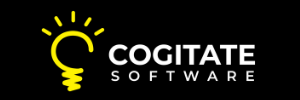We’re always after everyone to make backups of their system for all the obvious reasons. But there are several different approaches to backups to accomplish different ends. Here’s a short list:
Data Backup
This is backing up only the data that you’ve created or collected. This is the most important data to backup because you’ve invested your time in creating it. If it’s lost you have to recreate it. Everyone’s heard horror stories about someone’s computer that hasn’t been backed up in years finally crashing and everything was lost.
This type of data can be backed up in several ways:
- Copy the data to another hard disk. That’s the fastest.
- Copy the data to a thumb drive. Also pretty fast, but limited capacity.
- Copy the data to a DVD. Probably the slowest method and lots of handling of DVDs.
- Have a RAID system on your computer. That’s Redundant Array of Inexpensive Drives and it can do several things to speed up your computer and protect against a single drive failure. Easy but expensive.
- Have an online backup like our 9GBackup to copy everything to a server on the internet.
Image Backup
Backing up your data is the highest priority, but making a system backup will help get you going again quickest after a hard disk failure. It’s called an image backup because it makes a 100 percent copy of your hard disk. This is actually pretty difficult to do because of the large volume of data and programs and settings that a system contains. A brand new system, out of the box, will probably have 50 to 100 gigabytes of programs and data on it. Then you get the computer and start downloading software and configuring your email, desktop and other settings and that can double the used space. You’ll find you’ve also invested a lot of time tuning and customizing your computer and you don’t want to lose it.
Then you’ll need a program that will make an image backup and a device to hold the image. The easiest way is to have another hard disk equal in capacity to your system drive and get a program to copy your system hard disk to the backup. Windows 7 includes some tools to accomplish that. Also some of the DVD burning programs provide an image backup but they can take a lot of DVDs to hold the data.
Combined
Image Backups take a lot of time and effort to make so they can’t get done on a frequent basis. That means even with an image backup you still have to make frequent Data Backups to keep your current work safe. A RAID system does this automatically since everything really resides on more than one hard disk and if one (and only one) fails you are still up and running. If a RAID drive does fail, you can swap it out on the fly.
Offsite
All the above with the exception of the online backups do not protect against a fire, flood or other disaster that can destroy your building and all the computers and backups that exist there. To be really secure you need to get your backups into another building. That is easily done by just taking your backups with you to a different location. Online backups, of course, do this automatically by transmitting your data to a server somewhere on the internet.
Some internet services provide an additional layer of offsite backup. After your data is copied to a server on the internet an additional copy is made to yet another server in another location. So even if there’s an earthquake or other large scale disaster your data will still be safe.
Versions
Having a backup is a great comfort but there comes a time with data that is changing every day that you need more than one version of the data. This is usually required on large databases that get updated frequently. To solve a problem, you may find yourself in a position that you need, not the backup from yesterday, but the backup from the day before, or the day before that. Here a RAID solution doesn’t help. It only contains the current data. Backups to DVD or other media do have that covered by simply having several copies of the DVDs in a safe place. Some online backups do keep copies of older data that can provide this additional redundancy.
Security
Lots of data has no privacy issues but there is more and more that does require various levels of security. Copies of data taken home so that you have offsite backups, is vulnerable to theft. Many governmental agencies have strict rules for keeping data secure and that complicates the backup problem. Some data is fine for employees of an institution but needs be kept private to that intuition. Health Care professional have a whole body of rules of how to keep patient data secure. Data security adds another level to almost every backup challenge.
Your Own Style
It’s up to you to protect your investment in the data that resides in your computer systems. You must mix Data Backups and Image Backups using the tools described above that make the most sense to you and make sure they’re done in a timely and secure fashion. Once you do, you’ll have one less thing to worry about!
